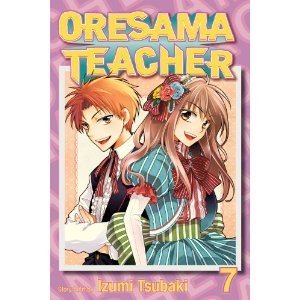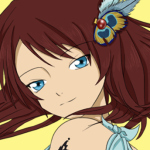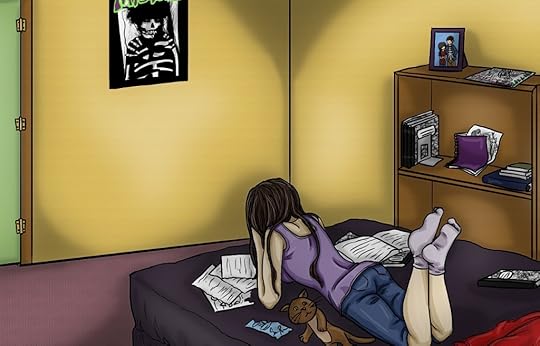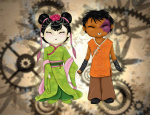S.Q. Eries's Blog, page 69
March 26, 2012
Ancient Olympic Fun Fact 13
2012 is significant in that it is a presidential election year, a leap year, and a summer Olympic year! The modern Olympics, of course, were inspired by the ancient Greek Olympics, a subject I've been researching for my work in progress. So in these months leading up to the 2012 London Games, I'll be posting weekly tidbits about the original athletic festival that started it all.
Here's this week's fun fact:
The prize awarded to Olympic winners was an olive crown.
Unlike modern-day athletes, who vie for medals of precious metal, victors at the ancient games received only a crown of olive branches. Granted, it was a special crown as the boughs came from Olympia's sacred olive-tree. Plus, the Olympic organizers wined and dined the victors at celebratory banquets, and, of course, there were life-long bragging rights. But there was no monetary prize.
As the popularity of Greek athletics increased, other sporting competitions popped up. Many awarded valuable prizes, such as huge jars of olive oil. Yet despite Olympia's lack of material prizes, none could unseat it as the most prestigious of all ancient athletic festivals.
Tune in next week for more about the ancient Olympics!








March 23, 2012
Manga Review: Oresama Teacher Vol. #07
 Mafuyu is a high school delinquent who wants to turn over a new leaf. So when she transfers schools, she thinks she'll finally be able to live the life of a normal girl. There's just one problem: her teacher Mr. Saeki is a bigger delinquent than she is and is out to take advantage of her fighting skills!
Mafuyu is a high school delinquent who wants to turn over a new leaf. So when she transfers schools, she thinks she'll finally be able to live the life of a normal girl. There's just one problem: her teacher Mr. Saeki is a bigger delinquent than she is and is out to take advantage of her fighting skills!
Oresama Teacher is a shojo manga that offers humor of the silly variety. Volume 7 has recently been released, and you can read on for the review. (For those who are interested, you can click here for my reviews of earlier volumes).
Back Cover Blurb
Mafuyu finally discovers the truth behind Takaomi's bizarre bet with the principal of Midorigaoka Academy! The twisted tale elicits her sympathy, and she decides to put her all into helping him out. But her all may be less than she hopes as she faces down the looming threat of… finals!
The RevieW
With Volume 7, we have the conclusion to the mystery-of-Midorigaoka-Academy's-past and finally learn Takaomi's true motive for betting with the principal and dragging Mafuyu into the Public Morals Club. In addition to getting a glimpse of Takaomi's soft side, the tale also paints the Hanabusa family in an extremely bad light.
Having learned this, Mafuyu is of course revved up to help Takaomi – so much so I was certain the following chapter would be a head-to-head between her and the chairman. Instead, all that intensity abruptly dissipates as the story switches back to comedy mode with the onset of finals. In a way, it does tie into Takaomi's bet as test scores do impact on school performance, but the chapter's more about making fun of Mafuyu's crazy efforts not to flunk out of school.
Then the story completely leaves Takaomi and Midorigaoka Academy behind with Mafuyu leaving for summer break. The latter half of the volume is devoted to the silliness of delinquents on vacation, and the final chapter, which is kind of a haunted house/dorm comedy special, doesn't even feature Mafuyu. I suppose the switch in mood is fine for those who prefer less serious reading, but I really did think that the momentum Tsubaki-sensei built up by revealing Takaomi's family tragedy was going to lead the story elsewhere.
By the way, this volume includes a bonus manga about how Takaomi and Mafuyu first met and several comic strips about the summer festival featured in Chapter 37.
In Summary
Volume 7 is a mixed bag. It starts off somber with the truth behind Takomi's bet with the principal, but then the intensity rapidly drops off in the latter half of the volume as Tsubaki-sensei shifts to what feels like comic filler.
First published at the Fandom Post.








March 19, 2012
Ancient Olympic Fun Fact 12
2012 is significant in that it is a presidential election year, a leap year, and a summer Olympic year! The modern Olympics, of course, were inspired by the ancient Greek Olympics, a subject I've been researching for my work in progress. So in these months leading up to the 2012 London Games, I'll be posting weekly tidbits about the original athletic festival that started it all.
Here's this week's fun fact:
A horse could win even without a jockey.
In Book 6 of the Description of Greece, Pausanias writes:
The mare of the Corinthian Pheidolas was called … Aura (breeze), and at the beginning of the race she chanced to throw her rider. But nevertheless she went on running properly, turned round the post, and, when she heard the trumpet, quickened her pace, reached the umpires first, realized that she had won and stopped running. The Eleans (the Olympic organizers) proclaimed Pheidolas the winner and allowed him to dedicate a statue of this mare.
Apparently weight handicaps weren't factored in Greek horse racing. Still, it's impressive she kept going in the race without anyone guiding her.
Tune in next week for more about the ancient Olympics!








March 16, 2012
Manga Review: Stepping On Roses Vol. #07
Cinderella-type  stories are a staple of shojo manga, and an ongoing rags-to-riches series is Ueda-sensei's Stepping on Roses. Set in Meiji Era Japan, it does get ridiculously melodramatic with two uber-handsome, uber-rich young men going after the pure-hearted heroine, but readers will get to enjoy seeing the characters work out their angst in fancy European gowns and in Japanese-style outfits. (For those interested in my review of Volume 6, click here.)
stories are a staple of shojo manga, and an ongoing rags-to-riches series is Ueda-sensei's Stepping on Roses. Set in Meiji Era Japan, it does get ridiculously melodramatic with two uber-handsome, uber-rich young men going after the pure-hearted heroine, but readers will get to enjoy seeing the characters work out their angst in fancy European gowns and in Japanese-style outfits. (For those interested in my review of Volume 6, click here.)
Back Cover Blurb
Soichiro's reputation becomes tainted when Sumi's true background is exposed, and even his position as president of his company is threatened! Sumi feels terrible for the trouble she's caused Soichiro, so she decides to leave him. Will Soichiro choose to let her go, or will he forsake everything for her instead?
The RevieW
Soichiro and Sumi haven't gotten to the point where they're saying "I love you," but actions can speak louder than words. With the resolution of the Eisuke embezzlement scandal, it's clear Sumi and Soichiro's marriage is more than a contract of convenience to both spouses, and all the romantics should be satisfied by the result. (By the way, Komai's reaction to Soichiro's declaration is quite cute!)
The way Chapter 41 concludes, the series looks as if it could end right there, but the story continues with the couple's new life among the city's poor. Of course, we have the comedy of Soichiro adjusting to pauper lifestyle, but the main driver to the plot is Nozomu's continued obsession with Sumi. Kujo finds himself at the top of Ashida Products – just so Nozomu can pull the rug out from under him. Nozomu seemed cold when he announced his divorce in Volume 6, but Ueda-sensei makes him even more ruthless–and gives him a slick new hairstyle to match.
Amid Soichiro's struggles and Nozomu's scheming, Ueda-sensei chooses this point in the story to sprinkle in pieces of Sumi's past. The way those bits of information get revealed practically scream "reunion with long-lost relative." Still, it remains to be seen how all the concerned parties will become aware of and piece together that information. By the way, the flashbacks (and the bonus manga) reveal a side of Eisuke that readers who are exasperated with the irresponsible sweet talker will find entirely unexpected.
In Summary
Soichiro finally embraces his feelings for Sumi, but it's not happily ever after yet. He's now the one adjusting to a completely different life as the couple winds up in the tenement houses. Rich-boy-going-to-rags is the stuff of comedy, but Nozomu's continued obsession for Sumi and his ruthless efforts to force her into his possession keep the melodrama going.
First published at the Fandom Post.








March 12, 2012
Ancient Olympic Fun Fact 11
2012 is significant in that it is a presidential election year, a leap year, and a summer Olympic year! The modern Olympics, of course, were inspired by the ancient Greek Olympics, a subject I've been researching for my work in progress. So in these months leading up to the 2012 London Games, I'll be posting weekly tidbits about the original athletic festival that started it all.
Here's this week's fun fact:
You could die during competition and still win.
In the pankration event, a participant won by forcing his opponent to submit, which the losing fighter signaled by raising the index finger. During one Olympic finals, a pankratist named Arrhichion of Phigalia wound up locked in a chokehold. Desperate to loosen it, Arrhichion broke his opponent's toe (some records say his ankle), causing such pain the man signaled defeat. As the referee raised Arrhichion's hand in victory, it was discovered that he had died from the chokehold. His body was crowned with the olive wreath and taken back to Phigaleia as a hero.
Talk about giving your all..
Tune in next week for more about the ancient Olympics!








March 8, 2012
Interview with illustrator Stephanie Martin!
When The Empress and the Comic came out in Scape e-zine at the beginning of this year, an unexpected bonus was the illustration that went with it. Stephanie Martin's chibi-esque drawing was so cute I had to get in touch with her. As it turns out, Stephanie's a fellow anime/manga fan, and she's been kind enough to agree to an interview!

Stephanie's profile pic of choice
STEPHANIE'S STATS
beverage of choice: Root beer, especially stuff at restaurants that's house made.
blood type: I think it's AB.
special ability: Being able to pick up anything creative and excel at it.
weak point: My own self confidence. I am my own worst critic, and I tend to be pretty mean.
favorite anime: Hands down now and forever it's Yuyu Hakusho.
favorite manga: A single book story by Matsuri Hino (better known for Vampire Knights) called Wanted. It has an adorable story, but either it never took off or she just never continued it because it's only one volume.
favorite book: A Midsummer Night's Dream by Shakespeare.
favorite video game: Legend of Zelda: Majora's Mask.
favorite pairing: I love Amy and Rory from Doctor Who, they're pretty adorable
1. How long have you been drawing? Have you had formal art training?
I've been drawing since I was itty bitty. My dad used to be a painter, and I grew up around him teaching me things about art. I knew color theory before I knew how to count to 100. However, I didn't really get into drawing a lot until I was 13 and started getting into anime. I had watched Sailor Moon when I was younger, but Digimon was what really got me going into drawing, as well as my best friend at the time. She saw I had great potential and pushed me to draw more often. I took art classes in high school and impressed my teacher to the point that my senior year he actually just gave me a "finished projects" number and let me make anything I wanted, giving me his whole supply closet to pull from.
I tried going to college for art, but there was something about these largely-populated art classes that killed my love of what I did. I fought my professor because she graded things on an A-B-C-D-F scale, and I don't think you can grade art like that, especially on your own. So I ended up quitting the first college to go to an art-specific college, but even there I felt like it killed my joy because of the simplicity of the beginning classes I was forced to take that were boring and dry. That's the closest I've ever had to formal training, the rest is just years and years of practice.
2. What style or artists have influenced you most?
When I was first starting out, anime was the biggest influence. I started with Digimon, slowly moving into more realistic styles depending on my anime of choice at the time. As I got older I began to see anatomy a lot easier, and began using human references in my anime style. I also would take bits of things I liked from fellow artists I grew around and would use that to influence my own style.
3. What are your weapons of choice when you draw?
I used to paint a lot with acrylic paints on canvas, and while I still do that, I more often now end with a digital finished product. I usually start with pencil on paper, getting down the general pose and things because I trust my hand on paper more than I do in a computer program, and then I transfer it to a computer where I do inking and coloring in Adobe Photoshop. I really want to break back into traditional art and get some Copic markers, but that stuff is EXPENSIVE!! @.@;;
4. You've done two illustrations for Scape e-zine (The Letters from the Monster Show and The Empress and the Comic). Is this your first published work?
I suppose not technically. In Fruits Basket manga Volume 11, they put one of my pictures in the back where they put fan art  I've also sold several paintings, but other than that this is the first time I've done illustrations for something like this.
I've also sold several paintings, but other than that this is the first time I've done illustrations for something like this.
5. How were you assigned Monster Show and Empress?
It actually all started because Scapezine's Assistant Editor, Morgan Dempsey, is a really good friend of mine. We used to play World of Warcraft together and we've met in person a few times at a convention in Seattle. She emailed me one day saying they were short an illustration and she wanted to suggest me for it and basically shoved me at Peta Freestone lol. After I did the art for Monster Show, Peta was checking over my DeviantArt page and got a good feel for my style and knew that Empress would be right up my alley.
6. Your drawings for Monster Show and Empress are very different. How did you decide upon the styles you chose for those two illustrations?
 With Monster Show, it's a very dark and sad story that I almost wish I had a different style for. As I read the story, a picture came in my head of what this girl's room must look like as she sat there reminiscing about this boy. So I started to include things she was mentioning, like the drawing he did of her in the notebook, all his old journals, the photo and album, and also making some hidden references to the ending.
With Monster Show, it's a very dark and sad story that I almost wish I had a different style for. As I read the story, a picture came in my head of what this girl's room must look like as she sat there reminiscing about this boy. So I started to include things she was mentioning, like the drawing he did of her in the notebook, all his old journals, the photo and album, and also making some hidden references to the ending.
With Empress, it was a similar thing in that as I read I got this visual in my head. I saw these two China dolls, one beautiful and perfect, the other cracked and unwanted, b ut they held hands anyway and shone light for all the world to see. I knew that was the illustration I wanted to represent, so I went out of my usual anime style and did something almost chibi-like dolls. It took some tries to get them right, fixing the faces, trying to ignore the odd proportions of things, but I love the way they came out.
ut they held hands anyway and shone light for all the world to see. I knew that was the illustration I wanted to represent, so I went out of my usual anime style and did something almost chibi-like dolls. It took some tries to get them right, fixing the faces, trying to ignore the odd proportions of things, but I love the way they came out.
7. Is most of your visual art originally inspired? Fan art? Commissioned? Friend request?
Most of the things I do are usually prompted in some way. Either a friend requests them or I want to draw a surprise for someone I know. I actually sketch without much prompt other than wanting to draw something more often than anything, and rarely share those anywhere.
8. Your deviantART name is KitsuneKari02. Is there significance to the fox reference? (Note: Kitsune is the Japanese word for fox.)
The biggest reason behind the fox reference is because of Yuyu Hakusho. My favorite character was Kurama, who's a fox spirit trapped in a human body. I got into foxes then, and this was also at the peak of my love for anime and Japanese culture. I used the internet to learn more about things like fox spirit legends, and when it came to thinking up a name for myself on DeviantArt, I decided to go with that. Since then I still love foxes, they're my favorite animal, and I still love the stories of fox spirits, so I've never really gotten rid of it.
9. If you could have any fictional character come live with you, who would it be and why?
I'd totally want Sumomo from Chobits to live with me, because I imagine a cute and adorable little robot girl would motivate me to actually be responsible and keep up with my artistic promises, and something that sweet being my personal cheerleader couldn't hurt either.
10. I noticed on your deviantART site that you're a cosplayer. Do you make your own costumes? Design for others?
I've done a few designs for friends when they've asked, mostly steampunk stuff. I was getting into cosplay when I was going to an anime convention in Denver, CO. Most of my costumes I did myself with the help of friends and some premade clothes from Good Will. I haven't cosplayed recently, mostly due to lack of funds and lack of self confidence in my looks, but I would like to try my hand at it again someday.
11. What would you do if you won the lottery?
I guess if we take out the obvious answers, I'd put some of it towards culinary school. While I love drawing and painting and all that, food is like this amazing other type of artistic expression that can also be eaten, so it's the best of both worlds. I've really gotten into cooking and baking in the last few years, and I've considered going to school but the thought of having to owe more college funds debt and all that just scares me, so I haven't really delved into it.
Also, I'd probably buy every color of Copic markers that are in existence lol.
~~~
Thanks, Stephanie, for sharing! For more about her and her creations, visit her deviantART page or follow her on Twitter.







March 5, 2012
Ancient Olympic Fun Fact 10
2012 is significant in that it is a presidential election year, a leap year, and a summer Olympic year! The modern Olympics, of course, were inspired by the ancient Greek Olympics, a subject I've been researching for my work in progress. So in these months leading up to the 2012 London Games, I'll be posting weekly tidbits about the original athletic festival that started it all.
Here's this week's fun fact:
Going to the Olympic Games could kill you.
If a modern-day Olympic athlete died in competition, there would be no end to the subsequent uproar. In contrast, casualties during the ancient games were commonplace. The equestrian events were especially dangerous, where collisions and pileups were inevitable, but athletes could also sustain life-threatening injuries from boxing, wrestling, and pankration (a blend of boxing and wrestling).
And it wasn't only the athletes at risk. This was way before anyone cared about safety measures, and an errant javelin or discus could fly into the crowds and kill someone. Not to mention, the masses themselves posed a problem. In addition to the heatstroke mentioned in Fun Fact 9, Olympia was a shrine, not a settlement. Everyone camped in close quarters for the duration of the festival, and between the flies, mosquitoes, lack of sanitation, and goods sold by questionable vendors, disease and food poisoning probably claimed other victims (or at least made them very sick).
Going to Olympia was definitely not for wimps!
Tune in next week for more about the ancient Olympics!








March 1, 2012
New on the shelves: Spring Fevers!
 Hey all! I've got a new short story out! It's part of Spring Fevers, an anthology of short stories that explores relationships in their varied states: love, friendships, family in its many guises, and the myriad places in between.
Hey all! I've got a new short story out! It's part of Spring Fevers, an anthology of short stories that explores relationships in their varied states: love, friendships, family in its many guises, and the myriad places in between.
Created by Cat Woods and Matt Sinclair, Spring Fevers arose from their work with the Agent Query Connect online writing community. While membership in the free site was not necessary for inclusion in the anthology, the ten writers whose stories appear are all members. A variety of genres, including young adult, literary, and science fiction, are represented in the collection, and my contribution, Resolution, is a lot different than The Empress and the Comic story that came out earlier this year. Please check it out!
And the best part – it's FREE. (Or at least it is on Smashwords. Amazon will charge you a whopping 99 cents, all of which is going to charity.) So enjoy a short from myself and the other talented writers in this collection.








February 28, 2012
Book Review: The Cartoon Introduction to Economics, Volume 2: Macroeconomics

For the Japanese, the combination of pictures and text is not just relegated to juvenile fiction. Non-fiction manga, ranging from history to instructive titles are part of the normal landscape in Japanese bookstores. American non-fiction comics are a bit more sparse, but we recently got a new title added to the list: The Cartoon Introduction to Economics, Volume Two: Macroeconomics.
Back Cover Blurb
Need to understand today's economy? This is the book for you. The Cartoon Introduction to Economics, Volume Two: Macroeconomics is the most accessible, intelligible, and humorous introduction to unemployment, inflation, and debt you'll ever read.
Packaging
This is a pretty durable book. It's not hardcover, but the binding is sturdy and the pages are thick so it should be able to survive some abuse in a backpack. The pages are printed in black and white, but I'm not sure if the art was originally meant to be color. Contrast gradations are achieved with varying shades of gray instead of screentones so some detail in the illustrations can be difficult to see.
The Review
Bauman's tag, "the world's first and only stand-up economist," might sound like a joke, but it's true. He actually is both a PhD in economics and a comedian (See his website www.standupeconomist.com). In this second volume of their cartoon series, he and artist Klein strive to be informative and entertaining on the subject of macroeconomics, and as a non-economist, I found it to be both.
The book is divided into three parts. Part One, A Single Macroeconomy, defines and explains basic terminology. Part Two, International Trade, provides illustrative examples on how trade plays out between countries. Part Three, Global Macroeconomics, isn't so much about concepts as it is food for thought about the future and the sustainability of current systems and attitudes. For example, Chapter 14 addresses global warming and the use of market forces to fight climate change. Bauman uses past events to illustrate his points and quotes Nobel Prize winners so there's also some history and name-dropping included.
Regarding the book's humor aspect, it's a combination of Klein's goofy artwork, one-liners, and silly illustrative scenarios (e.g. trading with aliens and outsourcing to different planets) with the occasional highbrow joke. Everything is rated G, though one joke I did find gross was the visual of the bumbling Depression-era Fed cutting off the legs of the economy.
In terms of this book's usage, it's appropriate for a layperson who wants to learn basic concepts like GDP and inflation. It can also act as supplementary material in the classroom but wouldn't be an ideal primary textbook for teachers as it doesn't contain review questions or practice problems. However, it may convey concepts more effectively to students who learn better visually. For instance, the book's analogy of a marriage between multiple partners to describe the adoption of the euro gets the point across in a fun and clear way.
In Summary
The Cartoon Introduction to Economics is an ideal launching point for young students and adults whose eyes glaze over in the face of too many lines of text. It's predominantly basic concepts with some food for thought about the future so you won't turn into an expert, but you'll come away with a better grasp of what all those analysts are talking about on CNN.








February 27, 2012
Ancient Olympic Fun Fact 9
2012 is significant in that it is a presidential election year, a leap year, and a summer Olympic year! The modern Olympics, of course, were inspired by the ancient Greek Olympics, a subject I've been researching for my work in progress. So in these months leading up to the 2012 London Games, I'll be posting weekly tidbits about the original athletic festival that started it all.
Here's this week's fun fact:
Spectators could not wear hats at the Games.
Kind of random, but apparently, a religious reason was behind this rule. It might not seem like a big deal – until you realize that the Games took place at the height of summer. Given how intense the sun gets in Greece, sunburn and heatstroke probably plagued every Olympiad.
Being an Olympic spectator was an endurance event in itself!
Tune in next week for more about the ancient Olympics!











